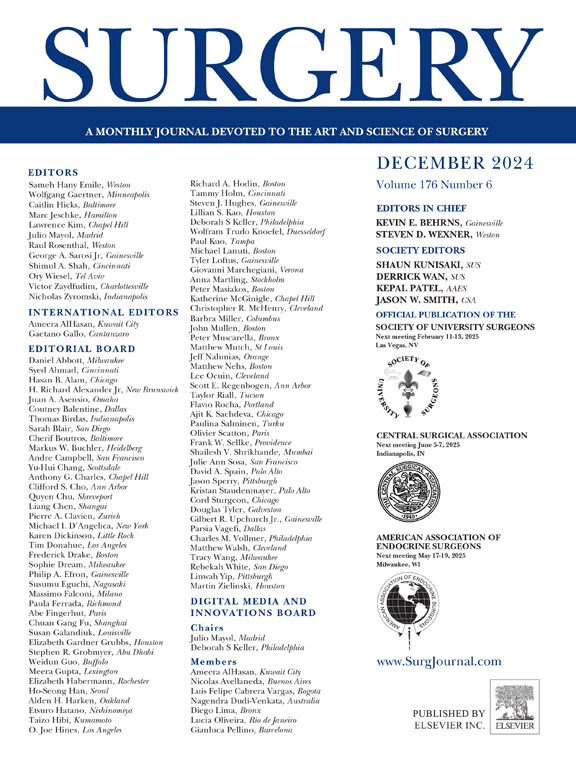烧伤病人的非典型护理是战争中的典型护理:调整旧教条以获得最大生存率
IF 3.2
2区 医学
Q1 SURGERY
引用次数: 0
摘要
本文章由计算机程序翻译,如有差异,请以英文原文为准。
Atypical care of burned patients is typical in war: Adapting old dogma for maximal survival
During the wars in Iraq and Afghanistan, US troops experienced burns were stabilized and quickly evacuated out of theater to Germany and then to the US Army Institute of Surgical Research in San Antonio, Texas. This was not true of casualties involving non-US or non-North Atlantic Treaty Organization soldiers and medical systems. In such situations, soldiers and civilians alike were treated in North Atlantic Treaty Organization medical treatment facilities and/or were transferred to host nation health care facilities until they healed or died from their wounds. Before 1970, most burns worldwide were treated conservatively and managed with some form of resuscitation and dressing changes. Debridement and skin grafting were reserved for burn wounds that became infected or granulated after separation of the burn wound eschar. This treatment algorithm was developed because of a lack of modern equipment (such as a dermatome or skin mesher) and partly because of adherence to dogmatic principles adopted for the previous century of battlefield burn wound treatment. Modern burn care standards in developed countries have advanced dramatically in the last several decades. However, employing these standards in under-resourced and overburdened hospital systems, such as those in the combat environment, will lead to a waste of resources and unnecessary loss of life. The following is a primer to burn care in war, tailored for providers in austere systems, that will maximize survival, help obviate the need for intensive care unit care, and save valuable resources and hospital bedspace.
求助全文
通过发布文献求助,成功后即可免费获取论文全文。
去求助
来源期刊

Surgery
医学-外科
CiteScore
5.40
自引率
5.30%
发文量
687
审稿时长
64 days
期刊介绍:
For 66 years, Surgery has published practical, authoritative information about procedures, clinical advances, and major trends shaping general surgery. Each issue features original scientific contributions and clinical reports. Peer-reviewed articles cover topics in oncology, trauma, gastrointestinal, vascular, and transplantation surgery. The journal also publishes papers from the meetings of its sponsoring societies, the Society of University Surgeons, the Central Surgical Association, and the American Association of Endocrine Surgeons.
 求助内容:
求助内容: 应助结果提醒方式:
应助结果提醒方式:


